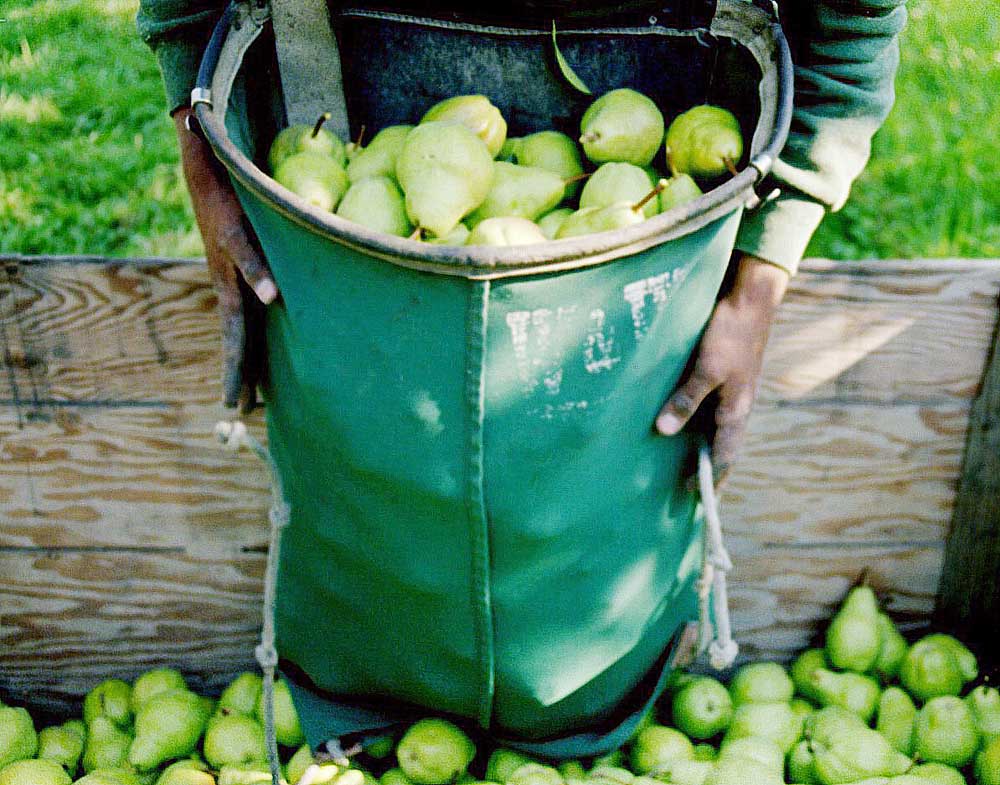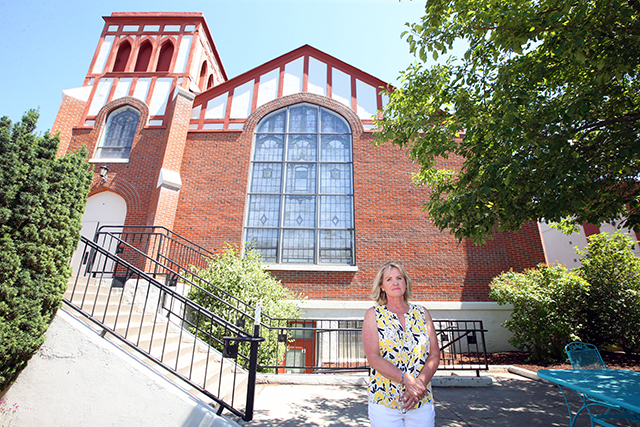Scorching heat challenges Oregon pear growers
Published 5:00 pm Thursday, August 12, 2021

- Pears are harvested at Tamura Orchards near Hood River.
HOOD RIVER — Just as another scorching heat wave arrived in Oregon, pear harvest was getting underway in the Columbia Gorge.
Crews began picking Bartlett pears in the early morning hours Wednesday at Tamura Orchards, about 10 miles south of Hood River. By 11 a.m., the temperature had already risen to 90 degrees, bringing the day to an early halt.
Trending
Lesley Tamura, a fourth-generation grower and vice president of the family farm, said they do not send workers to pick fruit when the thermometer hits 90 — let alone triple digits, which was forecast through the weekend.
“We don’t want to put them in any danger,” she said.
On the other hand, Tamura said time is of the essence. Tamura Orchards grows fresh pears for Diamond Fruit Growers, a local co-op and packing house, which gives its members seven days to finish picking Bartlett pears.
After seven days, the fruit can become overripe and soft.
Normally, Tamura said harvest can go until about 1 to 1:30 p.m. each day before it gets too hot. Assuming workers start at 5 to 5:30 a.m., that is still an eight-hour workday.
But with the extreme heat, Tamura said they are losing hours. That’s also not ideal for the workers, who are paid for each 40-pound tote they fill with pears.
Trending
“When it limits the hours per day you can pick, it’s difficult,” Tamura said.
Bartlett pears are the first variety to be harvested each year. Picking for d’Anjous will begin later this month.
Despite the sweltering weather, Ashley Thompson, extension horticulturist for Oregon State University in Hood River and Wasco counties, said the pear crop appears to be in good condition, especially when compared to apples and cherries that were damaged by heat earlier this summer.
Northwest growers estimate they lost about 20% of the cherry crop and 10% of the apple crop due to sun damage during a separate multiday heat wave in late June.
Pears, however, are less prone to sunburn. Thompson said she had a few reports of sun-damaged fruit, but nothing too significant. The bigger concern, she said, is whether this summer’s grueling heat has any impact on the fruit’s size.
“I’m expecting size might be impacted slightly,” Thompson said. “It might be a bit smaller.”
Mike Doke, executive director of the Columbia Gorge Fruit Growers, said he expects the overall crop yield to be about average. As of Wednesday, Pear Bureau Northwest, the industry’s chief marketing arm, was still finalizing its crop estimate for the year.
“Things seem to be going well,” Doke said. “We are keeping an eye on the weather.”
Devon Wells, who grows 550 acres of tree fruit including apples, pears and cherries in the Hood River Valley, said his pear crop is so far faring well.
Size-wise, Wells said the fruit looks to have rebounded from June’s heat wave., though he is wary of internal defects like cork spot where drought-stressed trees actually suck the water out of pears, resulting in brown, corky lesions in the fruit’s flesh.
Wells, who is president of the Hood River County Farm Bureau, said growers are also working to comply with new emergency rules adopted by Oregon OSHA, the state’s occupational safety and health agency, to protect farmworkers from heat-related illness and death.
The rules come after a 38-year-old Guatemalan immigrant farmworker, Sebastian Francisco Perez, died of what appeared to be heat stroke in 104-degree weather June 26 at Ernst Nursery and Farms in St. Paul.
Wells said working in pear orchards naturally offers more shade beneath the canopy, and the farm already provides cold water for employees in the field.
Another part of the rule mandates that farms take action if they cannot keep their labor housing below 78 degrees. Wells said they are considering whether to install a cooling station outdoors, or purchase window air conditioners for each of the farm’s 24 housing units.
{p class=”p1”}While farmers understand the need to protect their workers’ health and safety, Wells said the OSHA rule adds a greater onus on producers to avoid penalties.
{p class=”p1”}”It just adds another layer of record-keeping and training that we have to do in the orchards for things we were already taking care of, for the most part,” he said.








